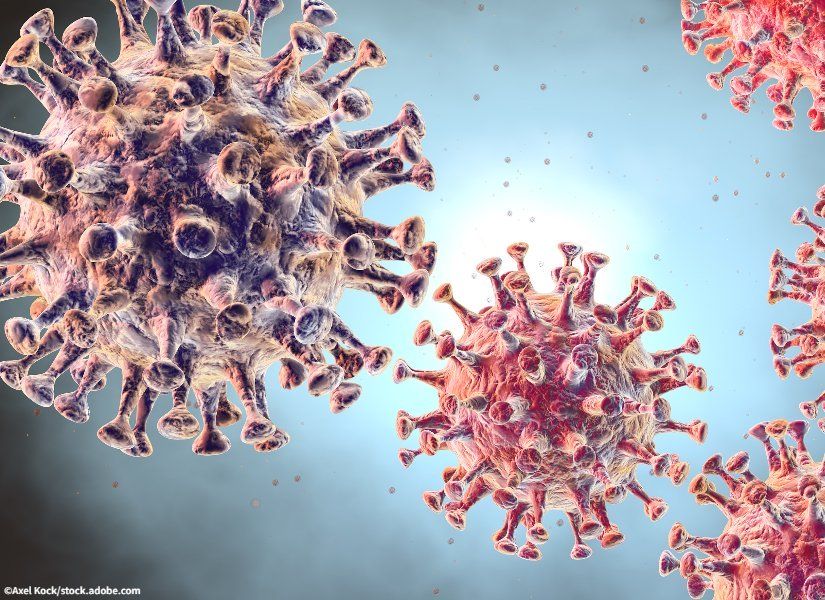
- Acne
- Actinic Keratosis
- Aesthetics
- Alopecia
- Atopic Dermatitis
- Buy-and-Bill
- COVID-19
- Case-Based Roundtable
- Chronic Hand Eczema
- Chronic Spontaneous Urticaria
- Drug Watch
- Eczema
- General Dermatology
- Hidradenitis Suppurativa
- Melasma
- NP and PA
- Pediatric Dermatology
- Pigmentary Disorders
- Practice Management
- Precision Medicine and Biologics
- Prurigo Nodularis
- Psoriasis
- Psoriatic Arthritis
- Rare Disease
- Rosacea
- Skin Cancer
- Vitiligo
- Wound Care
Article
AAD develops coronavirus resource center to support members through outbreak
Author(s):
As the national pandemic continues to escalate, the American Academy of Dermatology is actively compiling resources related to the novel coronavirus to support its members and their practices.

As the national pandemic continues to escalate, with new cases and findings about the COVID-19 virus coming daily, new insights are revealing the implications on dermatology practices and patients. To combat the pandemic, dermatologists must take critical steps to adapt operations while still providing essential patient care and preventing exposure in office settings, experts say.
In a message to members, released March 19, George Hruza, M.D., president of the American Academy of Dermatology (AAD), shared the latest insight related to the dermatology specialty, which included guidance on self-protection, as well as the protection of staff and patients.
Among the resources provided were tips for patient screenings and effective disinfecting solutions for use around the clinic based on guidance from the Centers for Disease Control (CDC) and the World Health Organization (WHO). AAD is compiling all resources related to the pandemic for members, which can be found at www.aad.org/coronavirus.
According to the guidance, there are measures dermatologists can and should take to minimize exposure risk. This includes, first, having a plan in place for any procedures to manage a patient who presents with signs or symptoms of COVID-19 infection. This plan should be clearly communicated to all staff members. The plan should also include protocol for informing patients of any changes to scheduling or policies that could take place due to the evolving nature of the outbreak. Importantly, any sick staff members should be encouraged to stay home.
Due to regulatory changes that were enacted to ease care delivery, physicians may be able to leverage telemedicine technology with patients exhibiting respiratory symptoms who also require dermatology care. Physicians can now receive reimbursement from Medicare, according to the AAD. The organization is working with private payers to develop similar service coverage. Updates, help with getting started and assistance with coding can be found through the online membership resources.
Signs and symptoms of infection, according to CDC, include fever, cough, sore throat and shortness of breath. If a physician suspects a patient’s symptoms could indicate a COVID-19 infection, the patient should be immediately isolated, and proper steps should be taken to confirm infection and to notify the local or state health department.
The WHO has put together a resource package for healthcare facilities to manage infection risk in the workplace. Among recommendations, WHO suggests staff regularly wipe down all chairs and arm rests, exam room tables, counters, doorknobs, light buttons and handles, faucet handles, all bathroom surfaces, reception area counters, all lab surfaces, and all kitchen area surfaces; keep trash cans empty and wipe down the inside and outside of containers regularly and thoroughly.
AAD is developing further guidance for members on personnel issues and will provide updates as the information becomes available.
More information on managing infection risk, clinic operations and staffing can be found here:
• AAD: Coronavirus Resources/Managing your practice through the COVID-19 outbreak
• CDC: Interim Infection Prevention and Control Recommendations
• CDC: Steps Healthcare Facilities Can Take
• WHO: The COVID-19 Risk Communication Package for Healthcare Facilities
Newsletter
Like what you’re reading? Subscribe to Dermatology Times for weekly updates on therapies, innovations, and real-world practice tips.










2 Commerce Drive
Cranbury, NJ 08512
All rights reserved.




